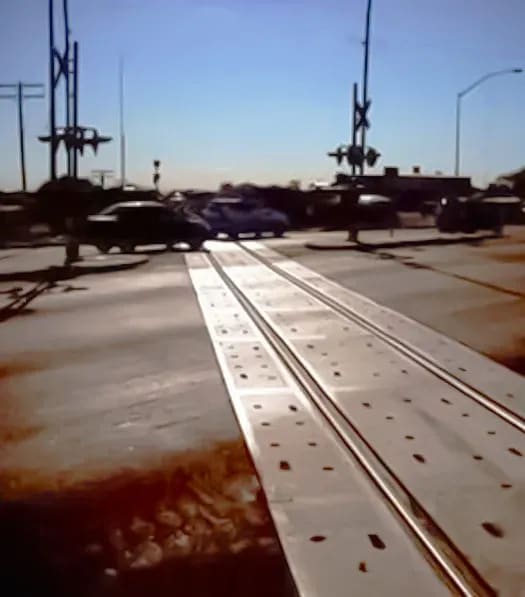Leaking Culvert Leads to Railroad Crossing Repair in Arizona
Problem
In Tucson, Arizona, a leaking culvert 20 feet below grade was eroding the soil and washing away fines, creating void space and weak layers of soil below a railroad crossing the I-10 freeway. Coupled with vibratory weakening of the soils as rail traffic passed along the crossing, differential settlement formed with enough severity to create real danger for unsuspecting vehicular traffic on I-10. Uninitiated drivers received a hard “bottoming out” incident upon approach, followed by a sudden launch and hard landing when passing over the crossing. If that hadn’t created enough notoriety for the crossing, the resilient modulus of the soil had deteriorated so far that the boxcars of rail traffic began striking the adjacent asphalt. Union Pacific and Arizona DOT officials knew they had an urgent problem on their hands, and they called URETEK.
Analysis
Dynamic Cone Penetrometer (DCP) tests were utilized to profile the soil below the railroad crossing in various locations. The results pointed to relatively weak to weak soils to a depth of 20 feet. Representatives of Union Pacific and Arizona DOT agreed to abandon the culvert and address that issue separately at a later date. The emergency they faced involved the significant settlement in the railroad crossing. Laser levels and manometer surveys reflected at least 6 inches of differential settlement in the center of the crossing, with further deflection as rail cars passed. The question was how to resolve the settlement issue, strengthen the soil, and increase the resilient modulus without shutting down the railroad or the freeway, and committing to a costly and lengthy Overex and Recompact project. After consultation with URETEK, officials agreed to give the URETEK Deep Injection® (UDI) process a try.
Solution
URETEK crews were dispatched to inject at four-foot centers along the railway crossing, between four and 20 feet deep. The injections started at the 20-foot depth, and worked their way to the surface, with the intention of first filling the underground culvert as part of an abandon-in-place strategy. Once the culvert was filled, the focus shifted to strengthening all soils and increasing the resilient modulus with UDI from a depth of 20 feet all the way to the surface. After the deep soil stabilization was completed, a solid platform was created to accommodate over five tons of lifting pressure as the final injections undersealed and lifted the rail crossing back to grade. Work was performed on one lane at a time, resulting in little to no downtime for ADOT’s vehicular traffic. To manage the work around busy train schedules, a flag man was posted a quarter of a mile down the line to notify the crew about approaching trains. When the call came in, the work area was immediately cleared, tubes were cut, and workers abandoned the crossing for safety. Once the trains passed, holes were re-drilled, tubes were re-driven, and injections continued!
Result
URETEK crews successfully completed the project in only seven days, realigning the crossing back to grade and stabilizing base soils to a depth of 20 feet below grade. URETEK’s proprietary polymer reaches 90% of its total yield in 15 minutes, so the occasionally-interrupted project resulted in zero downtime for rail traffic, and zero negative impact on the scope of services during the project. Once again, innovative thinking and engineering design saved time, money, and provided a rapid solution for local DOT officials.
URETEK Deep Injection® (UDI)
Widely referenced throughout our industry, UDI involves the injection of structural polymer into base and subgrade soils to increase the load bearing capacity. This is achieved by injecting the polymer through small holes drilled directly through the pavement structure to depths determined by site-specific analysis. Our URETEK 486 Star® material flows easily into voids and weak zones within the soil mass below. Through a controlled chemical reaction, the expanding polymer compacts surrounding soils and applies a controlled pressure on targeted areas of the affected pavement above. If needed, a multi-injection design plan is utilized to gently return the pavement to its original grade. The composite material quickly cures into a strong, dimensionally stable, and water-resistant geo-material, providing years of reliable service.
URETEK 486 Star®
URETEK 486 Star® polymer is a two-component, high-density, expanding thermoset polyurethane system. It was developed to be the ideal solution for under-sealing, void filling, lifting of settled pavement, stabilization and stiffening of weak soils, and for encapsulating and sealing buried infrastructure. URETEK 486 Star® is environmentally inert, non-toxic, and resists underground water erosion or weakening due to its industry-leading hydrophobic properties.


